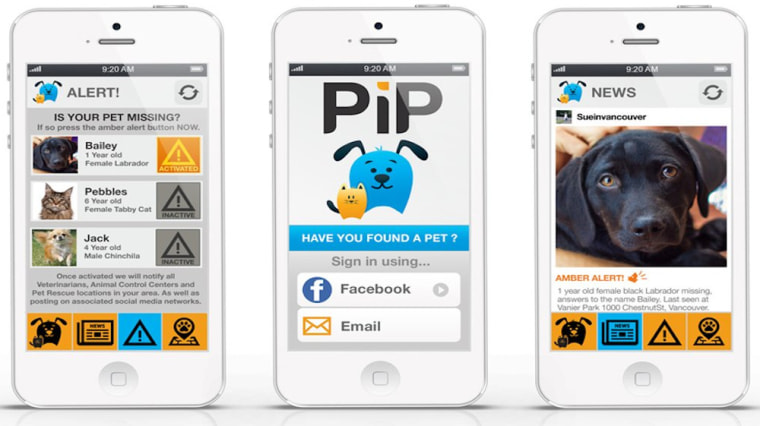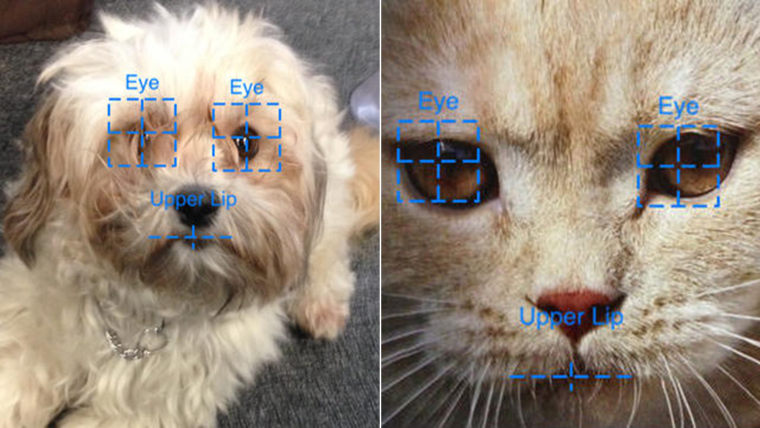The splattering of lost dog advertisements on telephone poles may soon be a thing of the past.
A new app dubbed PiP, or Positive Identification of Pet, aims to bring the search for missing animals into the digital age and help owners find lost pets using facial recognition technology.
“If we can do this for humans, certainly we can do it for pets,” Philip Rooyakkers, founder of the PiP app, told TODAY.com.
Pet owners can register their animals with the app, which stores a photo and basic information about your furry friend. If your pet then goes missing, you can activate an alert, which prompts PiP to contact you for more information about your situation, as well as broadcast the information to animal shelters and veterinary clinics within a 15-mile radius of the pet’s last-known location.
If someone finds a pet, he or she can upload a photo of the animal's face and PiP will check its database to see if the picture matches any pet profiles.

While the app is free to download, it costs $18.99 a year to register a pet with a photo and basic information. Rooyakkers says that since its launch in February, the app has been downloaded 4,000 times with about 50 percent of those downloads leading to pet registration.
Rooyakkers originally came up with the idea for PiP in 2011 when he lost his Yorkshire terrier. While he found the dog 24 hours later, the experience left him frustrated with the process.
“It really bugged me that technology hadn’t kept up to this problem,” Rooyakkers said. “You’re at home trying to get this information out, but at the same time, you need to be out looking.”
Shortly after, Rooyakkers remembers a black lab coming into his dog daycare business in Vancouver, Canada. The owners had only recently adopted the dog from a shelter. “He was in the shelter for less than 48 hours, but because he had no microchip, no tag, no tattoo, he was unidentifiable,” Rooyakkers said. “They had to adopt him out.”
Rooyakkers was devastated for the dog’s former owners, who most likely had no idea their pet had been found and subsequently placed in a new home. “I can’t imagine how heartbreaking that would be if that happened to me,” he said.
He soon began researching using facial recognition technology as a means of finding lost pets, and ended up creating the PiP app.
Since its launch in January, Rooyakkers reports that the app has already helped reunite pets with parents. Most recently, a couple that lost two dogs in Colorado in March were able to use PiP to successfully find their animals.
“The more we can reunite families with their pets,” Rooyakkers said, “the better it is all around.”
Follow Amy Eley on Google+.
